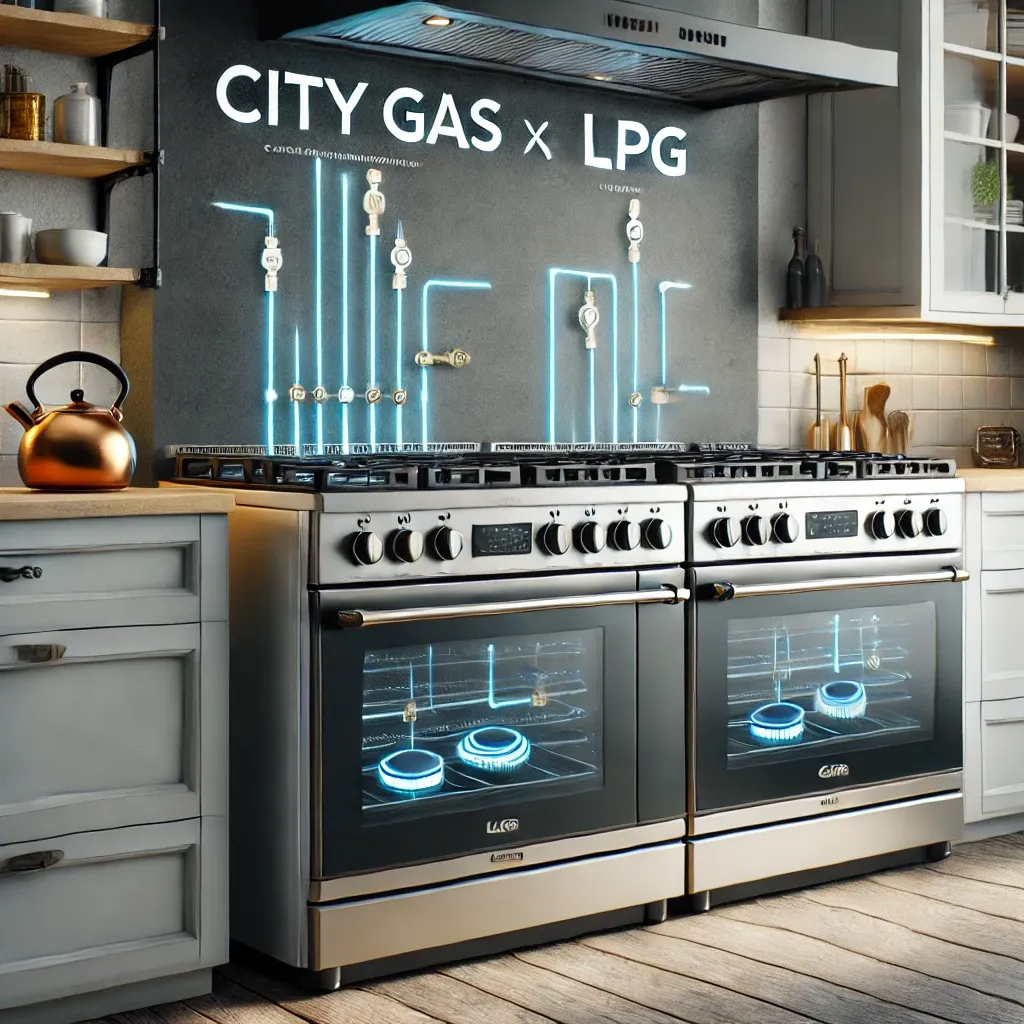Are you confused about the differences between Gas Range City Gas and LPG systems? Discover everything you need to know about gas ranges, including connection methods, and how to choose the right gas system for your kitchen. Keep reading for expert insights!
Gas Range City Gas LPG Difference
When it comes to using a gas range in your kitchen, one of the most significant choices you’ll need to make is whether to use city gas or LPG (liquefied petroleum gas). While both options serve the same primary function—fueling your cooking appliances—they operate in different ways and have distinct characteristics. Understanding these differences can help you choose the right gas system for your home.
City Gas vs. LPG: What’s the Difference?
-
Source of Supply
-
City gas is typically provided through a municipal pipeline network, while LPG is stored in portable cylinders that can be delivered to your home.
-
City gas tends to be more convenient, as it doesn’t require the storage of gas cylinders and is always available as long as you are connected to the network.
-
LPG, on the other hand, needs to be refilled periodically, which may be inconvenient depending on availability in your area.
-
-
Cost
-
Generally, city gas is more cost-effective than LPG because it’s supplied directly through the network, eliminating the costs of transportation and storage.
-
LPG can be more expensive due to the logistics of cylinder delivery and refills.
-
-
Energy Efficiency
-
LPG typically burns hotter than city gas, meaning it can provide higher energy output for cooking. However, city gas has the advantage of being available continuously, as long as there’s a connection.
-
-
Safety
-
Both city gas and LPG are generally safe to use, but because city gas is distributed through pipelines, there are fewer chances for mishaps involving cylinder leaks.
-
LPG requires careful handling of cylinders, which increases the chances of accidents if not used properly.
-
-
Environmental Impact
-
City gas, usually methane, is considered to be cleaner than LPG, which consists of propane and butane, as it produces less carbon dioxide when burned.
-
LPG, being a fossil fuel, also emits greenhouse gases, but it’s less harmful than coal or oil-based systems.
-
With these differences in mind, understanding how each type of gas works in a kitchen setting is crucial for making the right decision. For those who prioritize cost-efficiency, city gas is often the preferred choice. But if portability and higher heat output are needed, LPG can be more appealing.
Learn more about the differences between gas systems
Gas Range City Gas
City gas is one of the most common choices for households, especially in urban areas where pipeline infrastructure is already in place. Here’s why more and more kitchens are relying on city gas for their cooking needs.
Advantages of Gas Range City Gas
-
Convenience
-
With city gas, there’s no need to worry about gas delivery or replacing cylinders. The system is always ready to supply as long as you’re connected to the municipal network.
-
It also eliminates the risk of running out of fuel unexpectedly, ensuring a consistent cooking experience.
-
-
Lower Operating Costs
-
Because city gas is piped directly to your home, it’s typically cheaper over time compared to bottled LPG.
-
For households that cook regularly, the savings on gas bills can be significant, making city gas a cost-effective option.
-
-
Minimal Maintenance
-
City gas systems usually require less maintenance than LPG cylinders, as there’s no need to inspect or replace cylinders.
-
The gas supplier manages the network, so if there’s a problem, it’s typically handled by professionals.
-
-
Environmentally Friendly
-
As mentioned earlier, city gas is a cleaner fuel, producing fewer emissions compared to LPG. This makes it a more environmentally responsible choice in cities with high pollution concerns.
-
While city gas offers numerous benefits, it’s worth noting that it may not be available in every location, especially in rural areas. If you’re in an area with city gas infrastructure, though, it’s a reliable and efficient choice for your gas range.
Find out how to set up city gas in your kitchen
Gas Range City Gas Connection
Connecting a gas range to a city gas supply involves a few simple steps, but it’s important to ensure that everything is done safely and professionally.
Steps to Connect a Gas Range to City Gas
-
Check the Gas Supply
-
Before installation, ensure that the city gas supply is active in your area and that you’re connected to the municipal pipeline.
-
-
Choose the Right Gas Range
-
Not all gas ranges are compatible with city gas. You need to choose a model that’s designed to handle the specific pressure and flow rate of city gas.
-
-
Hiring a Professional
-
It’s crucial to have a licensed professional perform the installation. This ensures that the connection is safe and meets all local building codes.
-
The installer will check the gas pressure, ensure that there are no leaks, and make sure your stove works efficiently.
-
-
Inspect and Test the Installation
-
After the installation, the gas system should be inspected thoroughly. Gas detectors and leak tests should be done to ensure the system is safe to use.
-
-
Regular Maintenance
-
Once installed, regular checks should be performed to ensure the gas range and connection remain safe and functional. This includes monitoring for gas leaks and ensuring the burners are operating properly.
-
Connecting to city gas might seem straightforward, but safety is paramount. It’s always best to work with a professional to avoid any accidents or mishaps.
Learn more about city gas connection services
Conclusion
Choosing between city gas and LPG for your gas range depends on various factors, including cost, convenience, and energy needs. While city gas is often the more affordable and convenient option, LPG may offer higher heat output for certain cooking tasks. Whichever system you choose, make sure your installation is done by professionals to ensure a safe and efficient setup.
By understanding the differences and practical applications of each gas system, you can make an informed decision that best suits your kitchen needs. Whether you’re looking for long-term savings or powerful cooking performance, there’s a gas solution for every household.






